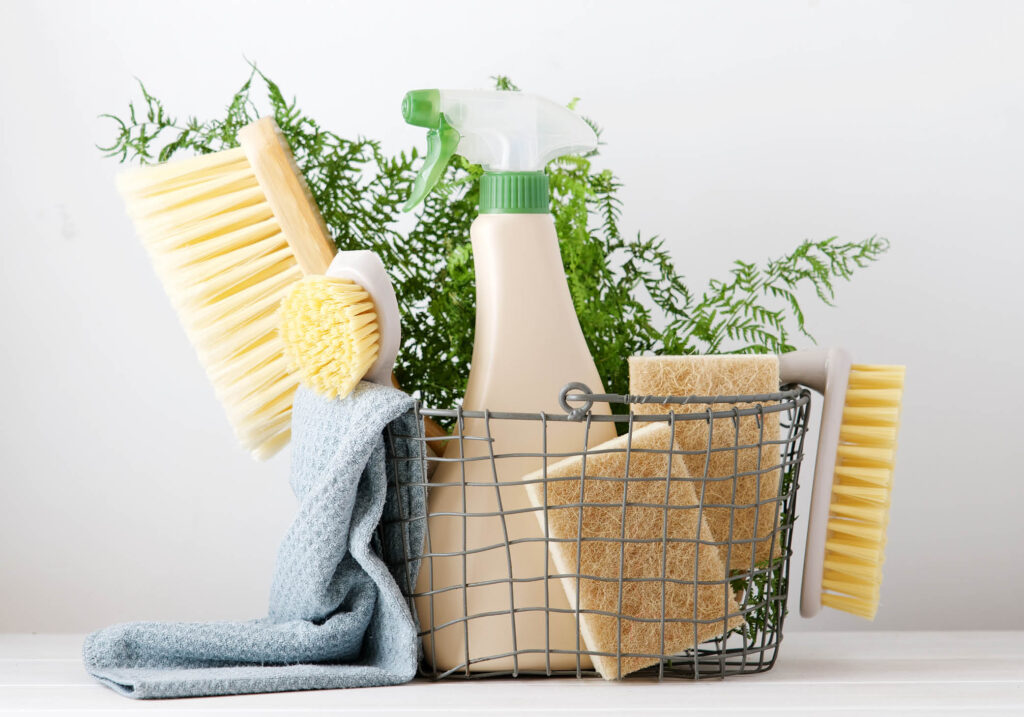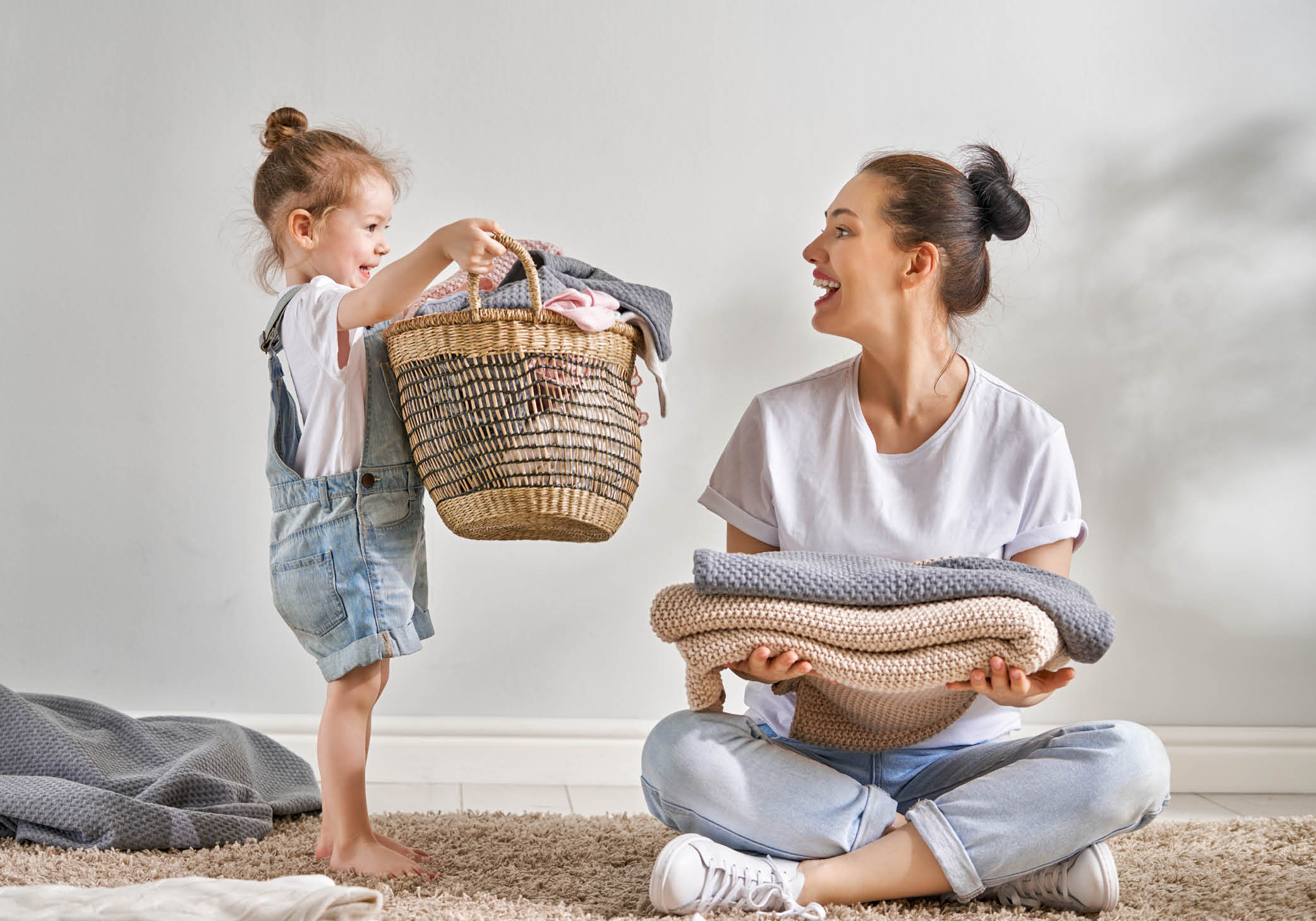Committing to create a more eco-friendly home may yield benefits beyond improving your carbon footprint; it can also save you money. Reducing your energy demand, saving water, choosing greener cleaning products, and making sustainable décor choices are all options that can significantly reduce the strain on local resources. And these improvements do not necessarily require professional contractors or a substantial investment. In fact, many of these changes take only minutes to make. Read on as we reveal some simple steps people can take to create more eco-friendly homes.
Change to Eco-Friendly Indoor Lighting
The first step toward a more eco-friendly home is an easy one. Take a moment to assess your indoor lighting. Do you have high-wattage bulbs in areas that could benefit from a more subtle lighting design? Choosing a lower wattage bulb will save energy and introduce an intimate glow that can warm up nearly any room.
Next, swap your incandescent light bulbs for LED ones where possible. It takes only minutes to do, and yet, as the experts tell Better Homes & Gardens, you can see a remarkable upgrade in your home’s energy efficiency, as the latest LED light bulbs “use up to 90% less energy and last up to 25 times longer than traditional incandescent bulbs.”
 Choose Greener Cleaning Products
Choose Greener Cleaning Products
While you once would have had to mix your own “green” cleaning products, there are now dozens of options to keep your home sparkling clean while avoiding harsh chemicals. Are you interested in revamping your cleaning process with an all-purpose cleaner? Try a pure castile soap. The experts at The Spruce are fans because “the solution does it all—use it as an all-purpose cleaner, a shower scrub, a veggie wash, laundry detergent, dishwashing soap, hand soap, shampoo, floor cleaner, bug repellent, and more.” The Magazine explains why they named “Dr. Bronner’s Pure Castile Soap” as their overall favorite: “It received excellent scores from the Environmental Working Group (EWG) because it’s made with over 90 percent organic ingredients and over 70 percent certified fair trade ingredients. It’s also vegan, cruelty-free, fragrance-free, and readily biodegradable.”
Pick The Proper Cooking Pan
Just being mindful of the size of the pan you use on a given heating element can help transition your house or apartment into a more eco-friendly home. Why? Real Simple explains: “A 6-inch pot on an 8-inch burner wastes over 40 percent of the burner’s heat.” Another easy cooking trick to keep in mind – a covered pot of water will boil faster and maintain its heat using less energy than one that is left uncovered.
Monitor Your Refrigerator
Grab a refrigerator thermometer and monitor your refrigerator and freezer settings. Real Simple reports: “Recommended temperatures are 35° to 38°F for the fresh food compartment and 0°F for freezers—anything colder means wasted energy.”
Cover Leftovers
Do you leave leftover food and liquids uncovered in the refrigerator? According to Real Simple, leftovers release moisture that requires the compressor to work harder and use more energy when left uncovered.
Switch to Showers
While relaxing in a full tub of water is a wonderful indulgence, switching to short showers occasionally can save water, energy, and your pocketbook. Better Homes & Gardens reveals: “A seven-minute shower with a 2.5-gallon-per-minute showerhead uses less water — and heat — than a full bath.”
Lower the Water Heater’s Thermostat
Is your water heater set at 140 degrees Fahrenheit? Better Homes & Gardens advises that reducing the temperature to 130 or 120 degrees can significantly reduce the amount of energy used to heat your household’s water. The water will still reach perfectly comfortable temperatures – in fact, you are likely not even to notice the change until your lower gas or electric bill arrives.
Shift to Cold Water Laundry
According to Real Simple, “up to 90 percent of energy spent on washing goes towards heating the water.” Luckily, many laundry detergents are now formulated to work best with cold water. If possible, wait to wash and dry your laundry until you have full loads. Also, swapping out your regular detergent for an eco-friendly option is another simple tip for creating a more sustainable laundry process.
Rethink Using Your Dryer
Do you live in a warm, dry climate and have the space to line dry some of your clothing? You may want to try it. Obviously, this isn’t ideal for small apartments or particularly rainy regions. But if you can do it, even making this choice occasionally will save energy, lessen the amount of lint blown out through your vents, and reduce maintenance costs.
Consider Using Wool Dryer Balls
When you do need to use your dryer, consider switching to eco-friendly wool dryer balls for your drying cycles instead of traditional fabric softeners or dryer sheets. While still helping to dry clothes quicker, wool dryer balls are chemical-free, naturally softening, and are sold with less wasteful packaging. The balls are reusable; some brands claim that you can reuse them for up to 1000 loads. You’ll be saving yourself money while also protecting the planet.
 Reset Your Programmable Thermostat
Reset Your Programmable Thermostat
You already know how easy it is to use a little less air conditioning or heat during peak hours. But if you are setting your temperature and leaving it, you could be wasting energy. If you are going on vacation or work away from home, Better Homes & Gardens suggests that you “set times for the air-conditioner or furnace to run” so that your system “won’t waste energy on an empty house.”
Close the Fireplace Damper
When you aren’t using your fireplace, remember to close the damper. When left open, your home risks wasting energy, and you’ll be left wondering why it takes so long (and cost so much) to heat or cool that space.
Attach Weather Stripping
Speaking of drafts, you probably have more air leaks around doors and windows than you realize. Take a quick look around to assess where there may be gaps. When you add weather stripping or caulking to doors and windows to help seal your home, you’ll immediately reduce its energy loss.
Clean Your HVAC Filters
The more dirt that builds up on your HVAC system’s filters, the worse your air quality becomes. It also forces the HVAC to work overtime, wasting energy and racking up bigger bills. Simply washing your filters every three months and replacing them when they start to wear will improve your air quality and reduce the need to replace or repair the system.
Decorate with Organic Fabrics
Decorating using sustainable textiles and fabrics has never been easier. Today, more furniture designers and builders than ever are joining the Good Future Design Alliance and pledging to reduce their waste by half over the next five years. Alliance member Niche Interiors tells The Spruce that consumers can choose beautiful, custom pieces that are also eco-friendly and will stand the test of time. As they explain to the Magazine, “Niche Interiors likes to avoid mass produced furniture upholstered with petroleum-based flame retardants and work with local artisans to build custom upholstered pieces made from natural latex foam wrapped in organic wool.” So, the next time you shop for chaises, chairs, ottomans, or sofas, check their origin and shop organic.
Apply Eco-Friendly Paint
If you plan to add a fresh coat of paint to any (or many) of the rooms in your house or apartment, consider using environmentally friendly paint instead of conventional formulations. You’ll want ones that are low- or zero-VOC. VOCs are chemical compounds that are known to be harmful to your health or air quality, according to the U.S. Environmental Protection Agency. But consumers don’t have to sacrifice style to achieve more eco-friendly homes. As Martha Stewart Living reveals, “readily-available brands like Benjamin Moore, BEHR, and Farrow & Ball all offer eco-friendly paint options, [and] you can still find your ideal color for any DIY project.” Many of these natural paints are also terrific at helping your walls resist mold and mildew, as well as being certified as allergen-friendly and cruelty-free. Some paint companies are even opting to develop vegan paint options.
 Use Solar Outdoor Lights
Use Solar Outdoor Lights
Review your outdoor lights. Are you running extension cords to draw power and illuminate your outdoor spaces? Motion sensor security lights, landscape path lighting, lamp post fixtures, and vintage-inspired string lights can all be powered using solar panels.
You’ll be amazed at security products like the “Sunforce Solar Motion-Activated Outdoor Triple Head LED Area Light.” The Spruce applauds the amount of the light it generates; “This area light gives off an impressive 1,000 lumens of illumination”… with a “built-in motion detector [that] identifies movement in a 180-degree range and within 30 feet….”
For entertaining, there are few lighting choices that enhance an outdoor space more than vintage-inspired bistro lights. Charming options like the “Brightech Ambience Pro Solar String Lights” will dazzle guests. Better Homes & Gardens recommends this appealing set because it “has an antique-looking aesthetic with exposed LED Edison bulbs,” which can be easily installed “over a patio via poles, along a fence, and under a pergola for a magical ambiance under the stars.” Charging is quick – one sunny day with at least 6 hours of exposure should get your set fully charged and ready to welcome your guests. After that, the lights will recharge automatically without drawing electricity from your home’s system.
Purchase Energy Star Appliances
If your plans include upgrading to more energy-efficient appliances, you’ll want to review the Energy Guide to choose the best Energy Star appliances for your needs. The Spruce explains: “Appliances carrying the Energy Star rating typically are 10 percent to 20 percent more energy efficient than non-rated models. This means you’ll not only save money by purchasing an appliance with the lowest Energy Guide rating, but you’ll also reap additional energy savings if that appliance is also Energy Star qualified.” Making this change will measurably reduce your energy usage, and it can go a long way toward creating a more eco-friendly home.


